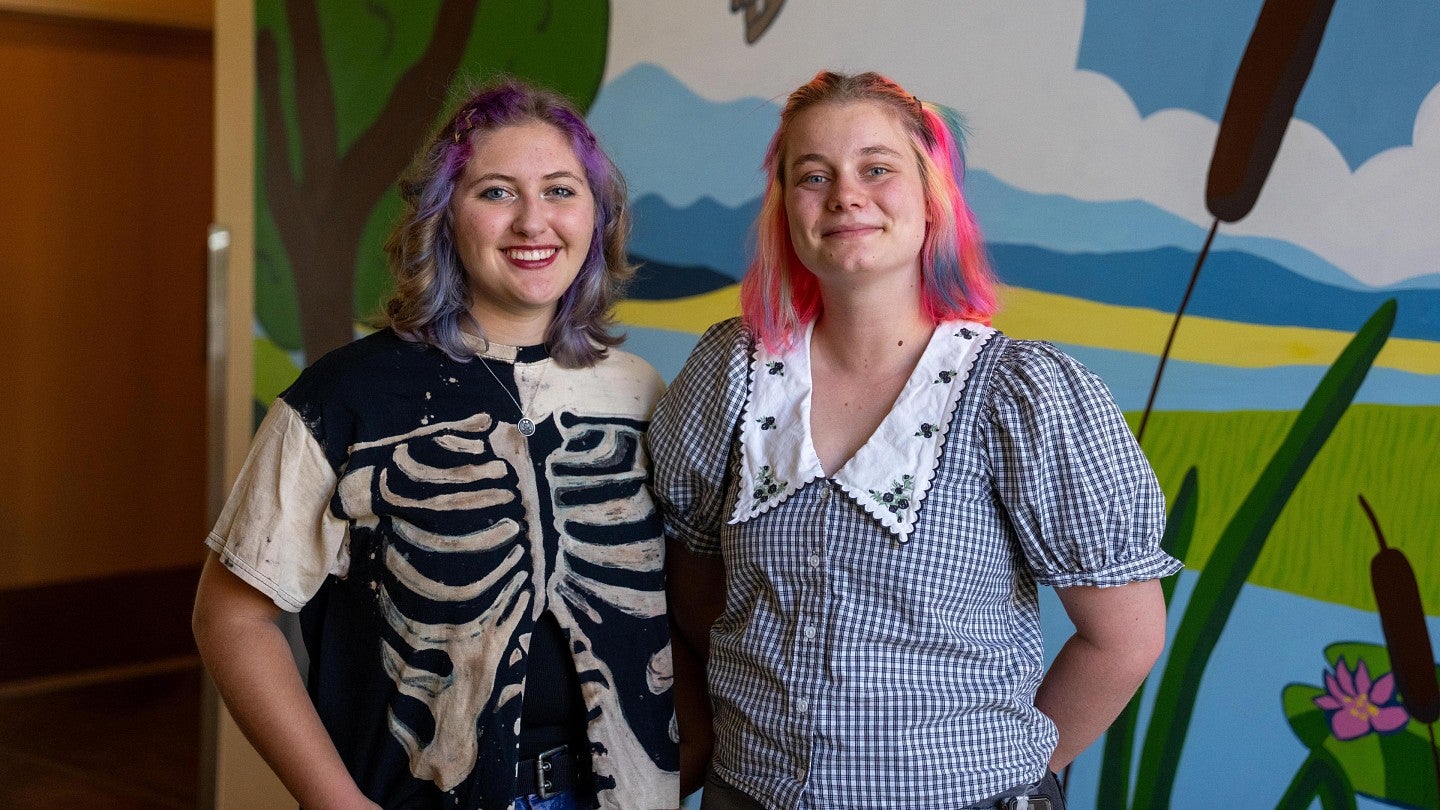
‘Two Birds,’ one mural: close friends practice art of collaboration
Lucy Rutherford and Dani Jacobs brought divergent styles and personal growth to a piece in the Living Learning Center
One is a planner. The other is go-with-the-flow.
One is a detail person. The other is more big picture.
One sees art as a hobby. The other, as a course of study.
Side by side, Dani Jacobs and Lucy Rutherford have been joyfully making their own art since middle school. But their new project for the Living Learning Center was a major collaboration — and that forced them to stretch not just as artists, but friends.
Jacobs and Rutherford are among five student artists in Flourishing by Art, a new art initiative that supports the University of Oregon’s strategic goal of helping everyone at the UO to flourish. Under the joint project of Housing Capital Construction and the Associated Students of the University of Oregon, Jacobs, Rutherford and the other artists recently completed murals and a sculpture for three residence halls.
Key to the university’s flourishing goal is creating the conditions for personal growth; that includes programs that challenge students, staff and faculty and provide opportunities to learn, strive and thrive. The art initiative supported that goal by giving student artists venues for their work and, for seniors Jacobs and Rutherford, an opportunity to try something altogether new: collaborating on a piece.
“We had never painted at the scale of a mural before, and we’ve been friends for long enough that we were interested in being able to try one more thing, especially together,” said Rutherford, an art major. “A new method of experiencing art ourselves was an intriguing prospect.”
“Two Birds, One Stone” is a stylized take on Oregon’s beauty, rendered with common house paint: hardy trees, flowing rivers, mountainous horizons. The fowl are — what else? — twin ducks in flight but, at least symbolically, could represent Jacobs and Rutherford and their trajectory at the university.
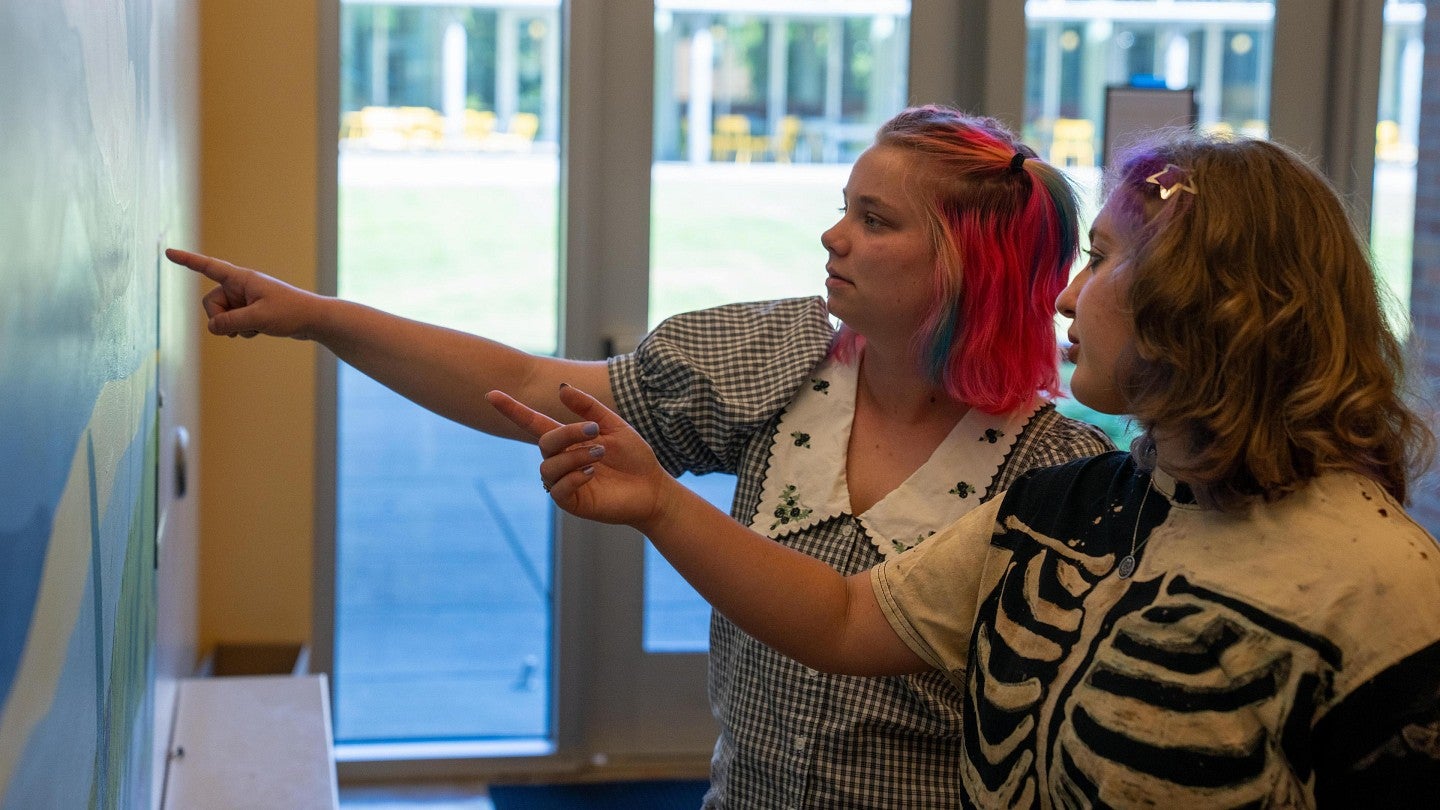
Jacobs, a double major in politics and psychology, transferred from a smaller school in 2024. At first, the size of the UO felt somewhat impersonal; that changed last winter, when Jacobs took courses on political ideologies with Sean Long, a pro tempore instructor in political science in the College of Arts and Sciences.
Long’s passion for the material sparked in Jacobs a hunger for understanding and discovery. But it was his willingness to make himself available to her that made the difference for Jacobs at the UO — memorably, when Long offered to meet over Zoom on a day off to help with a term paper.
“That was just like, ‘Wow, you really did not need to do that,’” Jacobs said. “That was his own time to not be working and he chose to help me with something. It was the first time that I felt like I was seen as a person in college. It felt like I made a genuine connection with someone.”
“You can’t just go into a student’s life and make them care,” Long said. “I can only really do anything for the students that want to come talk to me. That’s the whole point of the job, having intelligent conversations with intelligent people who want to have the conversation with me in the first place. And Dani is one of those. She is just a very curious student.”
Rutherford, meanwhile, was seeking change in her art. She found it through professors Laura Vandenburgh and Sylvan Lionni of the College of Design’s School of Art + Design.
Lionni, known for unvarnished criticisms of student work, was true to form with Rutherford’s initial efforts.
“It didn’t make me feel great, but I got over it,” Rutherford said. “He would say what needs to be said in order for us to grow as artists. Now, when I paint, I say, ‘What would Sylvan think about this? How can I make this more?’”
Vandenburgh taught Rutherford a trick the student has embraced: develop multiple paintings at once, to avoid getting stuck in one mindset for any one piece and instead reinforce fresh thinking about all of them.
In interviews, the two professors described Rutherford as fearless: plunging into the work, figuratively and also literally — Rutherford’s paintings often end with both artist and floor covered in colorful oils — and readily tearing up even promising pieces in pursuit of something exceptional.
“Lucy is remarkable,” Vandenburgh said. “They approach challenge with a kind of generosity, putting the whole of themselves into a piece, but then being open to think about it in another way, and have it become something else. There’s an adaptability and empathy and joyfulness that will serve them well as a person.”
Adaptability was a theme for the “Two Birds” mural — specifically, Rutherford and Jacobs adapting to each other’s style and process.
Rutherford’s lines are often on the soft side, Jacobs’ more rigid. Some parts of the mural they completed individually, as they had when making art as kids: Jacobs did the mountains, Rutherford, the ducks. But in other spots — the work depicting rock or a grassy expanse — the two combined their methods.
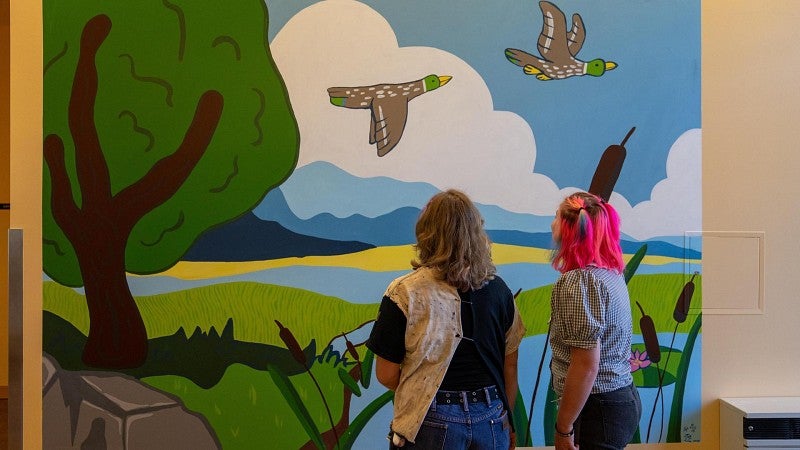
“The biggest thing you could see was the difference in how we approach life almost,” Jacobs said. “I’m a planner, I wanted to think everything out first. Lucy is, ‘I feel it, I’ve just got to do it this way,’ and in the moment you’re making a decision that impacts the piece as you’re working on it. We’ve had to compromise.”
“Having those differences of opinion allowed us to see different sides of what we were working on,” Rutherford added. “It’s a really good combo. Otherwise, I wouldn’t have done all that planning for it and Dani wouldn’t have been as flexible.”
Rutherford emerged from the project with new appreciation for the painstaking work that moves a painting from “good enough” to one rich with detail. And Jacobs grew in a way that will serve her beyond the canvas.
“It was such a big project that I’m impressed it actually happened,” Jacobs said. “I gained confidence in myself and being able to say, ‘I think this color is wrong’ and to trust I know what I’m talking about. Confidence in, ‘Hey, I want to do this.’ It’s the confidence to go after what I want.”
Flourishing by Art student profiles
The Workplace e-newsletter — emailed Tuesdays to staff and faculty — is featuring the student artists of Flourishing by Art.
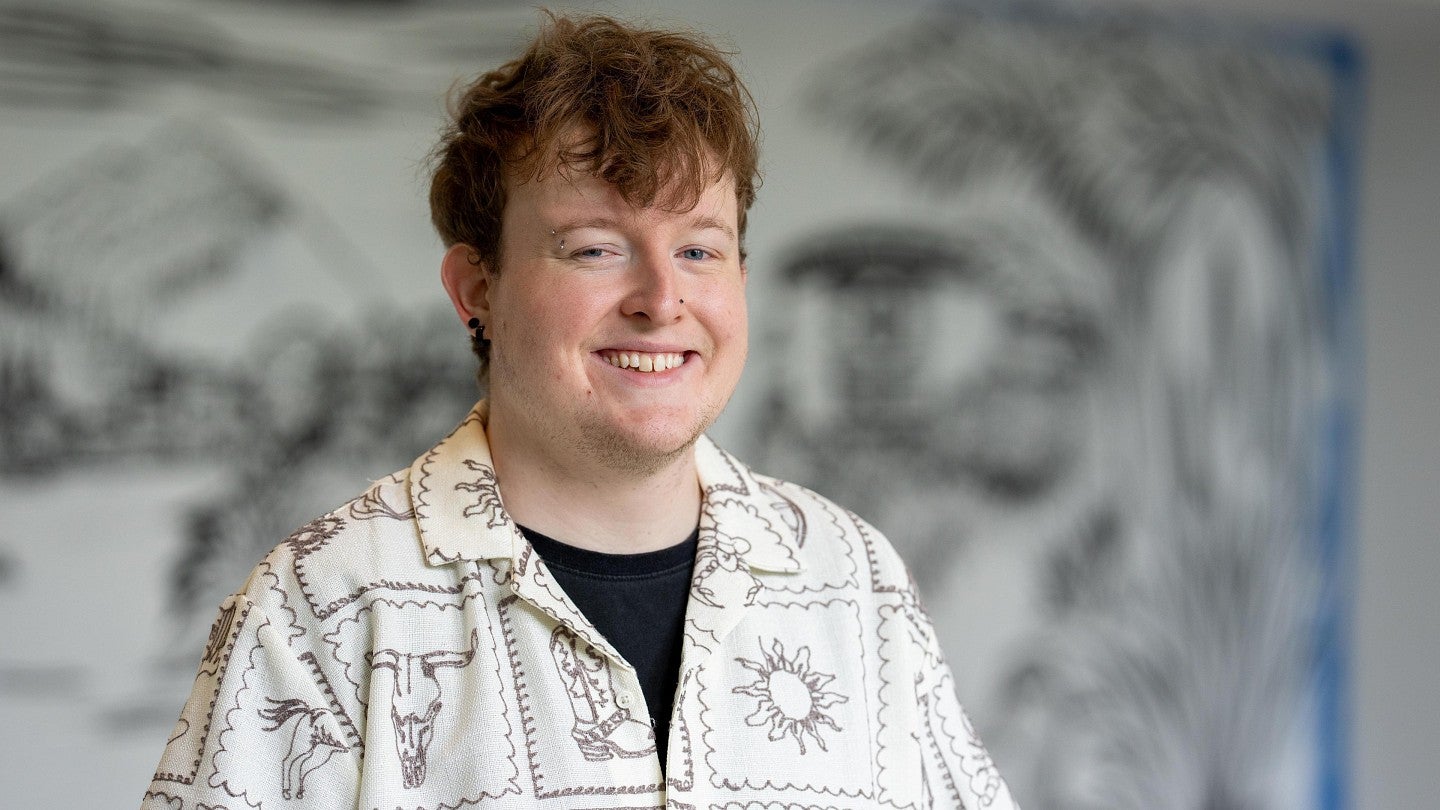
Oct. 7: Professional artist Anthony Michael Ryder is coping with the loss of his mother. The artistic process has given him catharsis and healing connections within the university community.
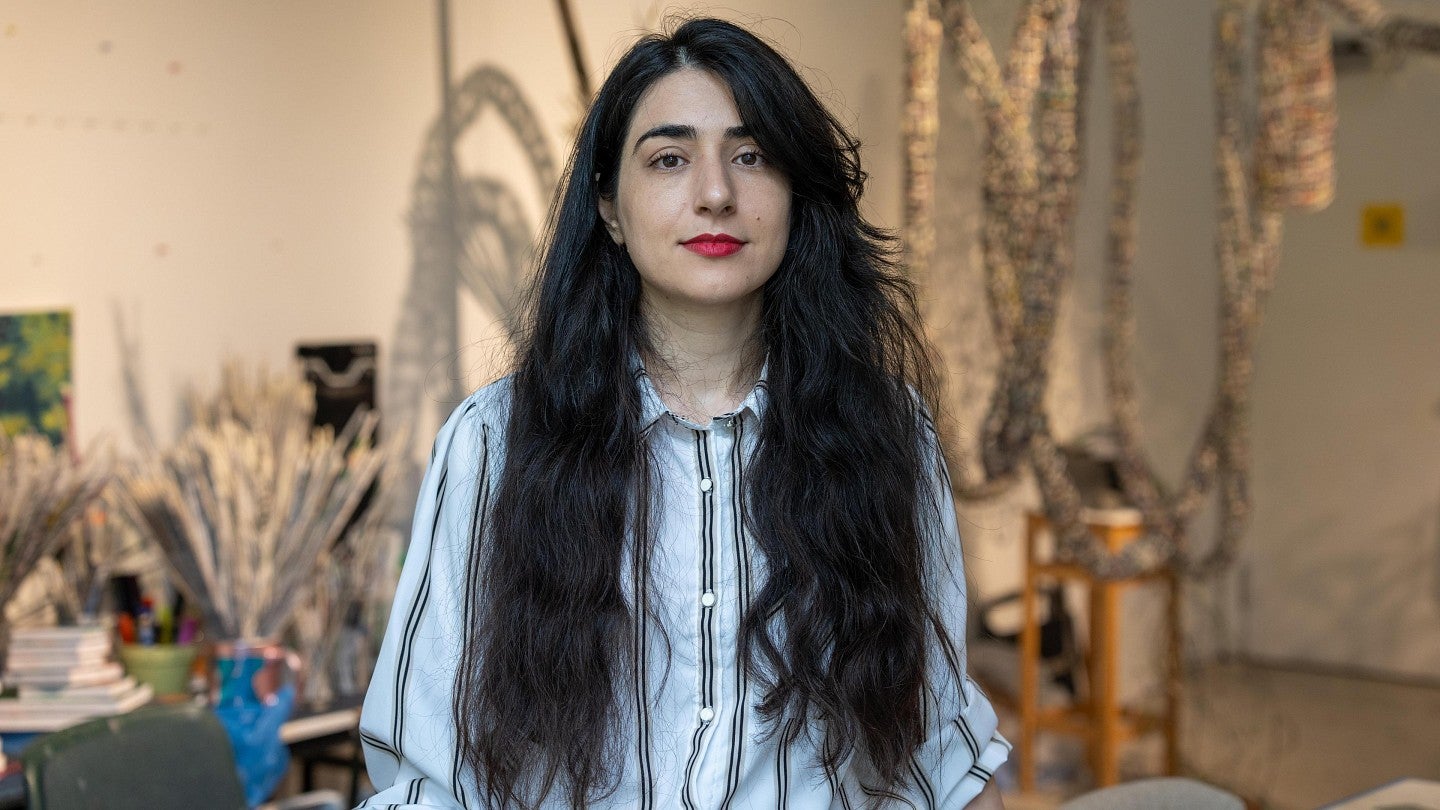
Oct. 14: Emerging artists need venues. Flourishing by Art provides one for Parisa Garazhian, an international student who combines Iranian mirror work and American quilt-making into a literal reflection on identity.
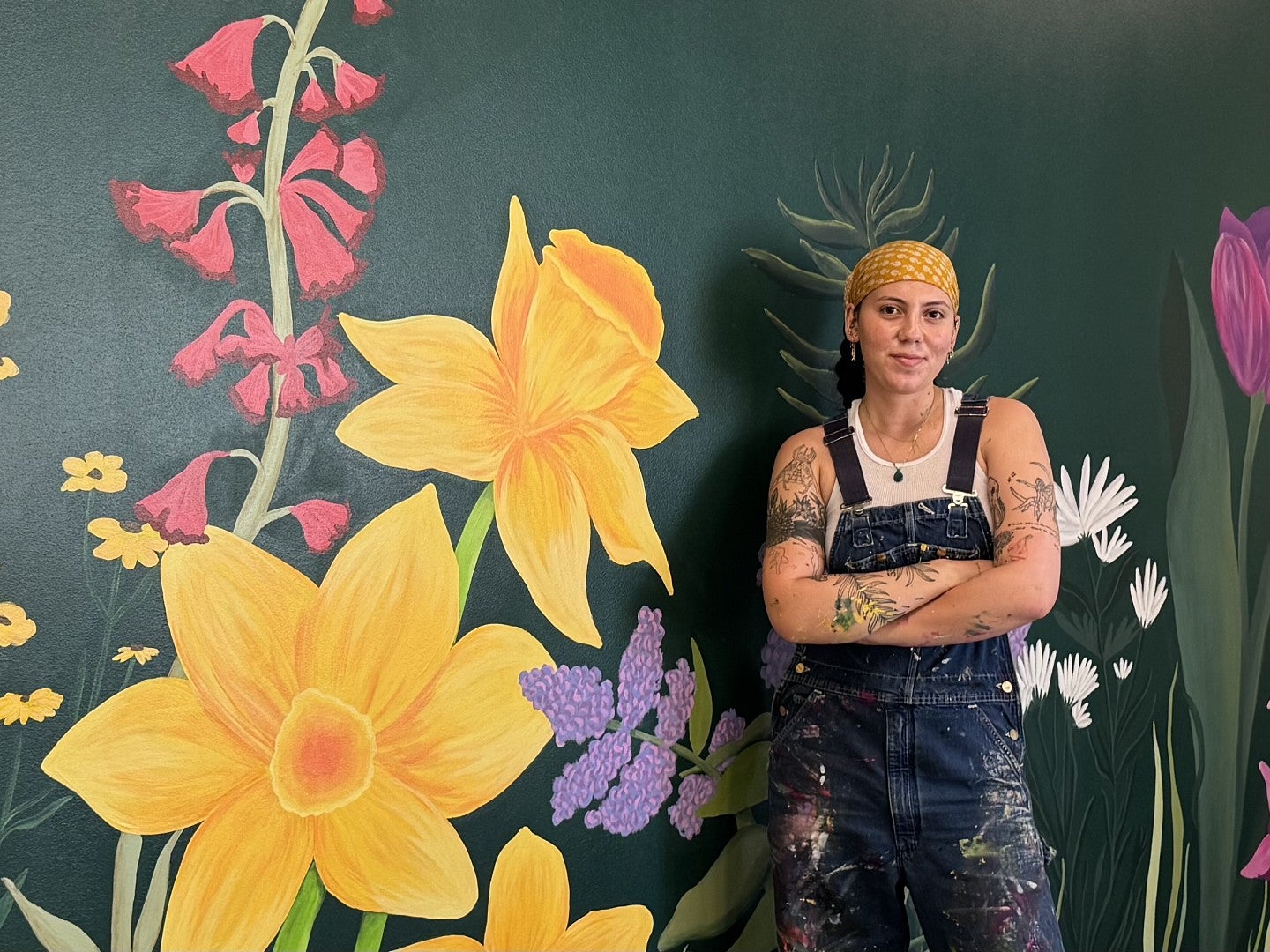
Oct. 28: Decorative painter Stella Prichard is driven to create — and to critique her creations. Her mural was the latest step on a path of learning to trust her decisions as an artist. (credit: tucker.grt@icloud.com)
See Flourishing by Art
Faculty, staff, students and the general public can view students’ works.

“Flora and Fauna”: Global Scholars Hall, mezzanine, 8 a.m. to 5 p.m., Monday through Friday during the academic year, excluding breaks.
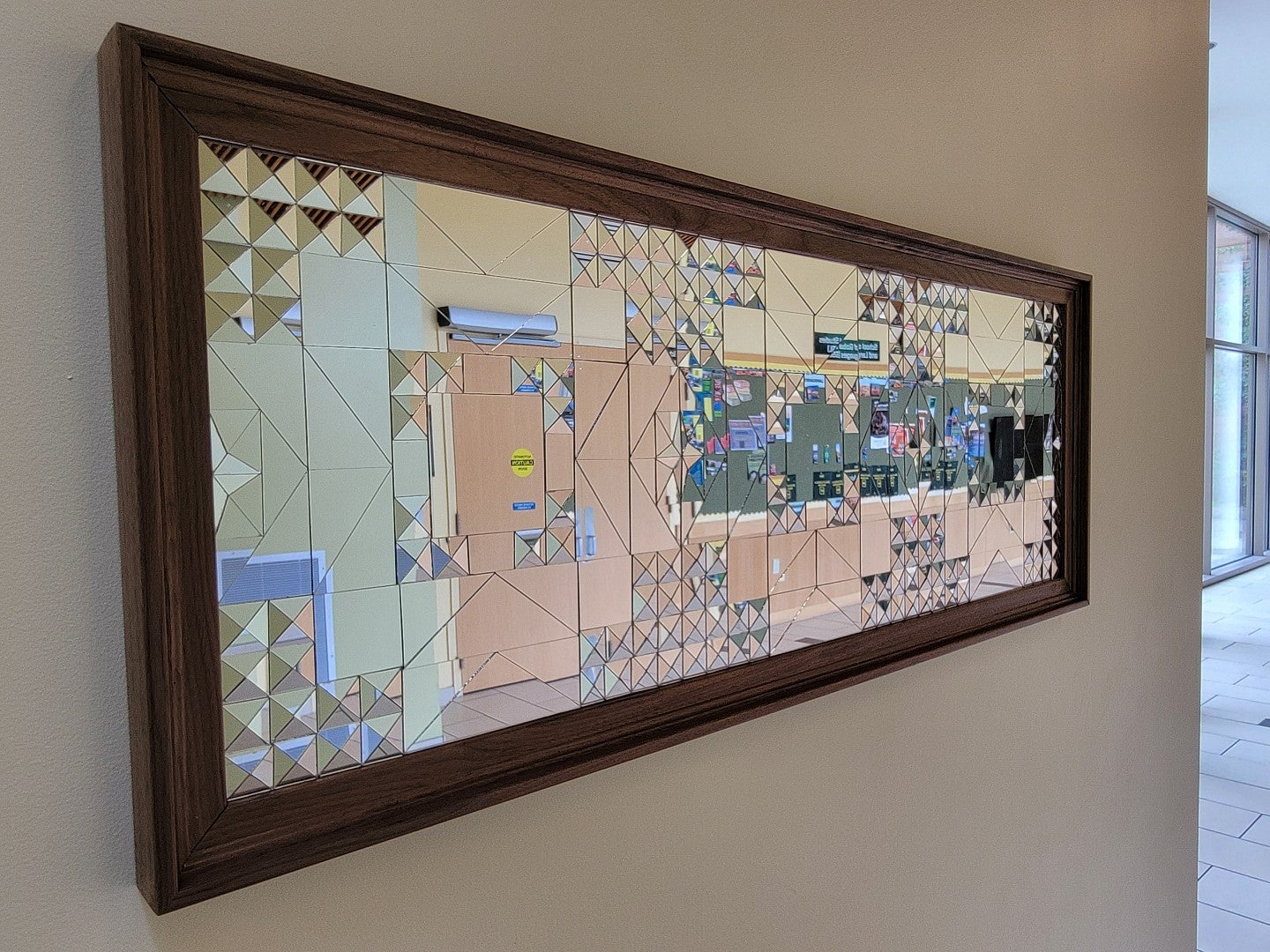
“Mirror Quilt”: Global Scholars Hall, first floor, 8 a.m. to 5 p.m., Monday through Friday during the academic year, excluding breaks.
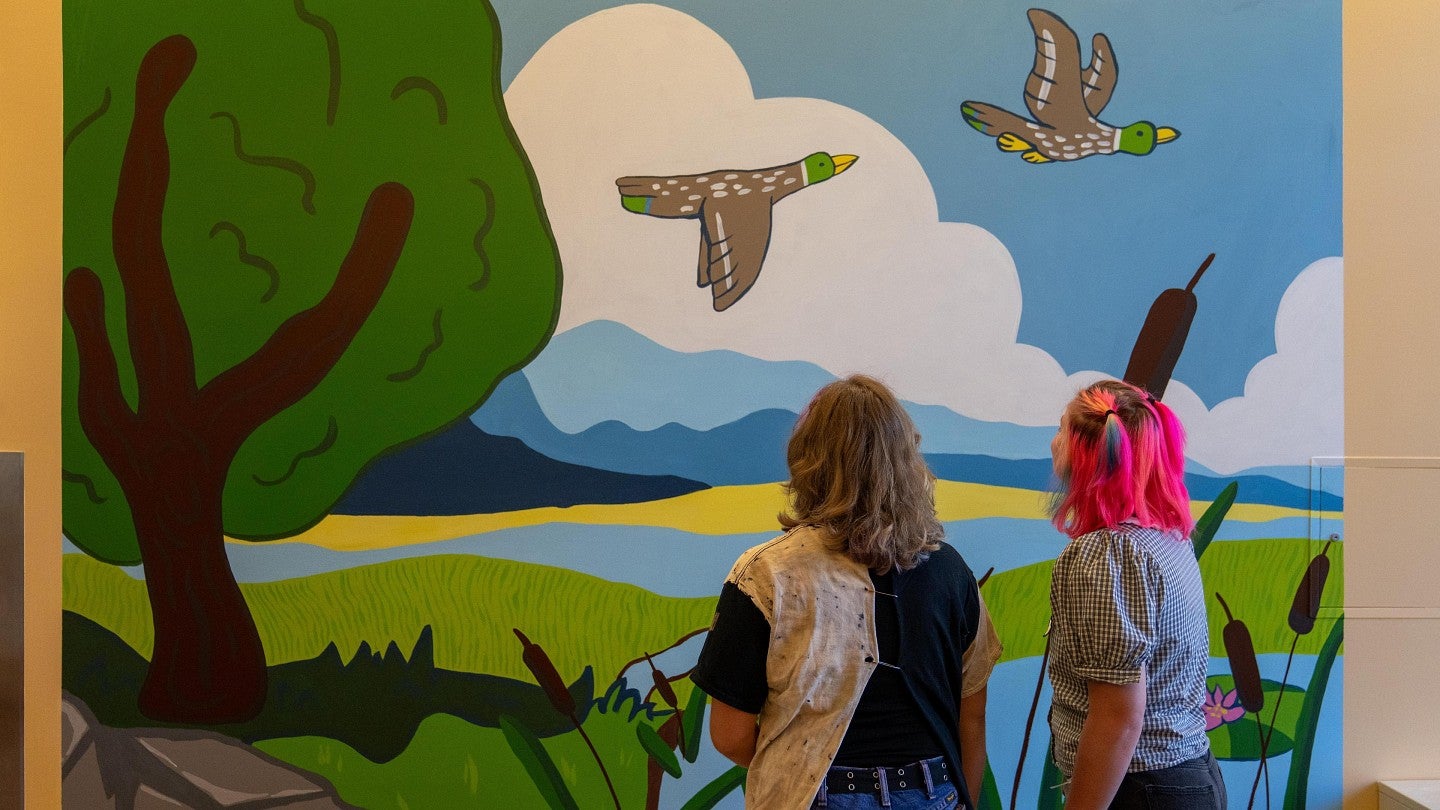
“Two Birds, One Stone”: Living Learning Center South, west hall, first floor, 10 a.m. to 9 p.m. weekdays and noon to 7 p.m. weekends during the academic year, excluding breaks.

